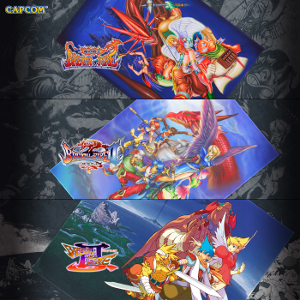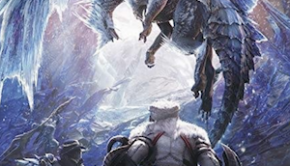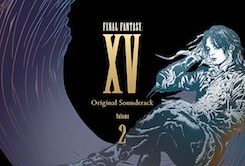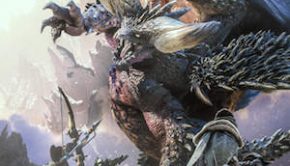Breath of Fire I – III Original Soundtrack Collection
 |
Album Title: Breath of Fire I – III Original Soundtrack Collection |
| Record Label: Capcom |
|
| Catalog No.: CUSA-0014/7 |
|
| Release Date: October 21, 2016 |
|
| Purchase: Download at Official Site |
Overview
It took Capcom a long time to fully commemorate its Breath of Fire series on soundtrack form. Near-complete commercial soundtrack releases were made available for Breath of Fire IV and Breath of Fire V shortly after the release of the games. However, Breath of Fire and Breath of Fire II didn’t receive a soundtrack release, while the Breath of Fire III soundtrack release was woefully incomplete. Capcom remedied this in 2006 with the release of a box set featuring the soundtracks from the series in March 2006. However, this expensive and out-of-print set is unlikely to be worthwhile except for the most hardcore fans. In September 2016, Capcom finally rectified this by releasing the complete soundtracks for the first three games in a digital bundle.
Body
Breath of Fire
The box set opens with the music for Breath of Fire, which amazingly had never been released before. Under Yasuaki Fujita’s lead, a team of four composers created music that not only fitted the scenes in the game, but also pushed numerous musical and technical boundaries on the Super Nintendo too. The defining compositions of Breath of Fire are Yasuaki Fujita’s neo-Baroque compositions. He creates an instantly striking sound at the start of the game with “Blood Relation”. The bittersweet gothic here string melody is harmonised beautifully by the sweeping harpsichord arpeggios and, while limited in channels and samples, the music still sounds surprisingly sophisticated. It’s quite of the score for Super Ghouls ‘n’ Ghosts, in fact, yet with a more cinematic leaning. “The Dragon Warrior” subsequently provides a delightful twist on the typical hero theme of an RPG, combining adventurous wind melodies and brass calls with an urgent, relentless bass line. “White Dragon”, one of the darkest tracks on the soundtrack, also impresses with its brooding string-focused orchestration and gorgeous counterpoint between piano and harpsichord.
Another definitive composition on the Breath of Fire soundtrack is Mari Yamaguchi’s “Starting the Journey”. Like any good overworld theme, this track undergoes quite a multifaceted development, from its motivating introduction, through an uncertain interlude up towards the relieving climax. Each phrase is delightful in its crisp focus, yet exuberant orchestration, ensuring a bold, immersive sound is created even on the SPC chip. Town themes such as “Day and Night”, “Music City”, and, courtesy of Yoko Shimomura, “Trade City” have a mellow and comforting quality, while still maintaining aspects of the period orchestration featured elsewhere. There is a diverse dungeon themes here too, ranging from the downbeat and ethereal “Deep Forest”, to the Arabian-influenced “Sand Palace”, to the mysterious and slow-building “Skyscraper”. Though they adhere strongly to game music convention, they are still quite well done.
Compared with other RPGs, the battle themes on Breath of Fire are merely average. Among the more notable ones, the normal theme “Beginning of Battle” is a little reminiscent of Mega Man music with its bouncy slapped bass and slightly jagged melody; while the eventual development section is excellent, the primary section is a little too unfocused and plain to be of most interest. The boss theme “A Brave General” restores the modernist orchestral leanings of the score to portray a brutal and uncertain encounter, yet lacks the individuality and elaboration of Yamaguchi’s headlining compositions. At least the climax of the score is impressive. Following two deliciously dark villain’s theme, “The Final Level” provides some of the best moments of gothic orchestration on the score, before the final boss theme “Black Dragon” plunges listeners into chaos with an ambitious and mostly accomplished horror orchestration.
Though quite a dense and serious score for the most part, there are plenty of light-hearted moments throughout the score. Tracks such as “Flying”, “Profit”, and “A Drunk’s Life” from Fujita provide an interest contrast in mood with their light jazz flavour. “Song and Dance” meanwhile is quite liberating at the centre of the score with its catchy melodies and samba flavour. The closing tracks, “Dawn”, “Return”, and “Great Achievement”, are nothing special, but are again fulfilling in their in-game context and musically impressive outside it. The latter, in particular, provides a rare orchestration on the score that is not tinged by evil and tragedy. Overall, while Breath of Fire‘s soundtrack accompanied quite a typical game, it was actually rather remarkable for the time. This is principally because the composers, particularly the wonderful Yasuaki Fujita and Mari Yamaguchi, decided to also push musical and technical boundaries while creating tracks that fitted the scenes.
Breath of Fire II
Of all the scores in the series, Breath of Fire II from Yuko Takehara has the most noticeable continuity with its predecessor. Among the similarities include the focus on orchestral elements, the use of RPG staples, and the employment of similar synth samples. As evidenced from the opening themes, Breath’ of Fire II continues the epic orchestral focus of the series. Yet whereas Breath of Fire featured elaborate gothic-tinged orchestrations, the treatment of the orchestra is often plain and straightforward here, if still effective. With its relentless chords and thunderous percussion, “The Destined Child”, for instance, makes a massive impact despite its brevity and unoriginality. Other tracks such as “Coliseum”, “Century of the Patriarch”, and even the staff roll “Thank You, Everyone” also feature loud top-heavy orchestration that is highly striking in the game, but are a little obnoxious outside it. More moody tracks such as “Ther World is Trembling”, “Cold and Dark”, and “No One Knows” are also too dense yet static to be immersive. In general, Takehara’s approach sometimes feels a little functional and unartistic compared with that offered by Fujita on the previous score. However, it’s not an absolute regression, since the music works almost flawlessly within the game.
That said, Yuko Takehara had an above-average command of orchestration for a game music composer back in the day. Some of her works carried over on to the box set are especially reflective of this. “Kingdom”, for instance, is a classically-oriented town theme with period phrasing and chamber orchestration. The most remarkable feature of this composition is the way it develops from a frivolous A section towards a much deeper B section, culminating in some striking fanfare figures at the 0:31 mark. “Clumsy Dance” is also far more intricate than the context demanded and could have sufficed perfectly fine as a short bouncy ditty; the fact that Takehara took the time to score a wistful development section makes the track worthwhile out of context, though. Other tracks that go way beyond the call of duty include “We’re Ranger” with its delightful flute trills, “Let Me Sleep…” with its dreamy harp work, and “Left Unspoken” with its electric piano contemplations.
The most disappointing aspect of the entire Breath of Fire II score are its action themes. Given the rest of the soundtrack is dominated by traditional orchestral music, the rock stylings of these thankfully few themes provides quite an awkward contrast. “Cross Counter” packs a lot into its short playtime, entering a number of contrasting sections; however, none of these sections are strong enough for a normal battle theme and some of the treble synth sounds quite gimmicky. “I’ll Do It” is one of the better implemented rock tracks on the Super Nintendo and has a real thrust, but unfortunately is let down by its fairly repetitive riff-based composition. Box set exclusives such as “Pincer Attack” and “Critical Moment” are also little better than the average hurry themes. “Lethal Dose” is a better fit for the score with its orchestral stylings, but is surprisingly low-key for a final battle theme, transitioning between slow-building brooding section and more urgent ones, without ever really sounding climactic.
Finally, it should be noted that there are occasionally moments in the score that reference the themes and styles of the original Breath of Fire. “Please, God” is a box set exclusive featuring a well-implemented pipe organ. However, probably “God of Decadence” is the closest the soundtrack comes to emulating the gothic style Yamaguchi built up on the previous score. This is an invention featuring interweaving choral and pipe organ writing. The composition is among the more authentic-sounding Baroque imitations on the Super Nintendo and the synthesis of both elements is also highly impressive. Following the gorgeous “The Closing of the Dragon’s Eye at the End of the Tale”, there is also a delightful arrangement of “Starting the Journey” in the penultimate track “Breath of Fire”, featuring more intricate countermelodies and enhanced synth. It would have been a worthy main theme for the series had it not been dropped in subsequent scores. Overall, Breath of Fire II does often resemble a vanilla orchestral RPG score, especially when sandwiched between its gothic predecessor and jazzy successor. However, it’s extremely evident during the course of the soundtrack that Takehara is capable of producing ambitious and elaborate compositions too
Breath of Fire III
In 1997, Capcom’s female duo Akari Kaida and Yoshino Aoki turned around the convention of RPG soundtracks by creating a light jazz-based soundtrack for Breath of Fire III. For example, the game’s world map theme “Without a Care” was quite daring at the time of its release. The track presents a fairly memorable melody on xylophone above some funky jazz stylings. The resultant track is a refreshing departure from RPG norm yet somehow fits the worldview of Breath of Fire III quite well, at least until the second overworld theme took over. That track, “To the Distant Place,” is a very cohesive piece of music, despite its blend of stylistic elements. Compared with its counterpart, it has a slightly more reflective tone given the progression of the game, enhanced by the use of a woodwind lead and serene strings. Sadly, not all the light-hearted tracks here are so delightful and some tracks are so similar in nature that the soundtrack can grow repetitive. “Clumsy March”, “Intermission”, and a set of four character themes are particularly shallow and irritating.
There is nevertheless a fair amount of diversity elsewhere on the soundtrack. “Half Done is Not Done” serves as the first dungeon theme in the title. Its light jazz stylings are absolutely adorable and the interplay between the playful xylophones and chalumeau clarinets is especially effective. “Eden” is an imitation of commercial smooth jazz with its laidback pacing and blend of acoustic and synthesised elements. Yet while it could have been disgusting, it’s actually very pleasant and atmospheric, especially with the acoustic guitar performances and scenic bird tweets. “Falling Green” is an interesting but somewhat disjointed twist on Chrono Trigger‘s forest bass line, while the portrayal of Wyndia Castle brings some majestic orchestrations to the table. “Island” and its near-identical arrangement “Avoiding Death” enter another area in the jazz world with their Latin-inspired rhythms and saxophone melodies. Yet despite the exotic setting, there are still some slightly sinister vibes featured here. Finally, the last dungeon theme “Castle in the Sky” is another Mitsuda-inspired track that has a more downbeat and ambient feel, but is nowhere near dull or aseptic.
The battle themes maintain stylistic continuity with the various setting themes, but have a more energetic feel to them. “Do Your Best” features more bouncy melodies and funk licks, but punctuates it with rhythm guitar chords and answering keyboard phrases. The resultant track somehow manages to simultaneously be easygoing yet motivating at the same time, which is perfect given the context. “DONDEN” meanwhile ups the intensity somewhat and is reminiscent of the epic rock-orchestral battle themes found on more conventional fighting soundtracks. Perhaps more enjoyable are the multi-tiered “Angels and Dragons”, “Dragon Asymmetry”, and the last battle theme “Self-Determination”. With its ominous introduction, epic guitar melodies, and elating development, it’s a wonderful track that surprisingly wasn’t available in the original edition of the game’s soundtrack.
There are several major tracks to round off the soundtrack. “An Offering to the Dragon” is the main rendition of the main theme, initially exposed in the unremarkable “Opening” and a woodwind-based arrangement. More interesting is the fully-fledged rendition at the climax; the melancholy string melody and deep synthy accompaniment make a much bigger emotional impact here and there is also a fascinating evolution into a more uplifting section towards the end. “Stairs ~Ending~” is a short piano-based track that features increasingly elaborate orchestration. As the track progresses, there is a recapitulation of “An Offering to the Dragon” which is surprisingly touching. More disappointing is the ending vocal theme, “Pure Again”, with its derivative J-Pop stylings. The use of the composers themselves as vocalists doesn’t quite work here, although they put in good efforts. What’s more, the instrumentals are largely quite derivative and repetitive, despite a decent guitar solo. Overall, despite an abundance of filler tracks, the Breath of Fire III soundtrack is an interesting twist on RPG soundtrack conventions and works well in its fully-fledged presentation here.
Summary
Despite ups and downs, each score here is highly interesting for different reasons: the surprisingly ambitious scoring of Fujita’s Breath of Fire, the rich classical orchestrations of Takehara’s Breath of Fire II, and the carefree jazz innovations of Kaida’s Breath of Fire III. There’s plenty of great music across the 196-track digital collection and it’ll particularly appeal for fans of old-school RPG soundtracks. For those looking for a physical release and with considerable money to spare, it’s also possible to track down the Breath of Fire Original Soundtrack Special Box, featuring these soundtracks and two others across a 12 disc set. For everyone else, the digital album is easily accessible and well worth the 15 USD pricetag.
Do you agree with the review and score? Let us know in the comments below!
4
Posted on January 31, 2017 by Chris Greening. Last modified on January 31, 2017.














